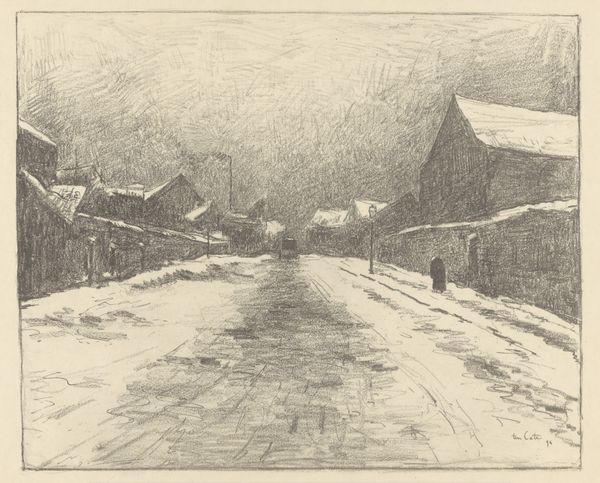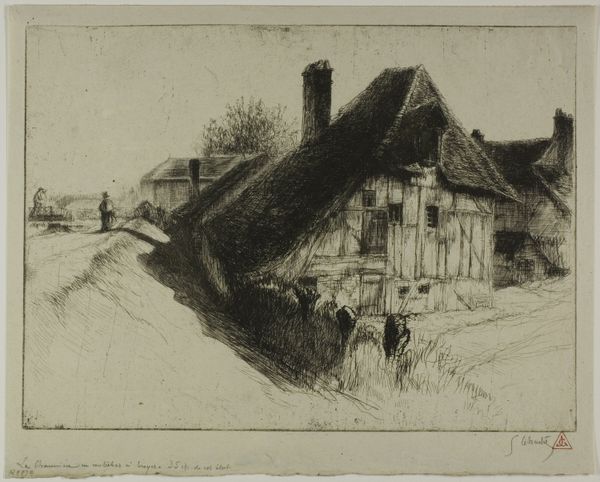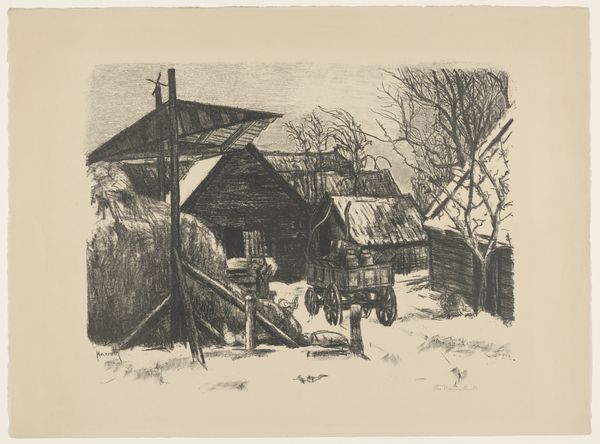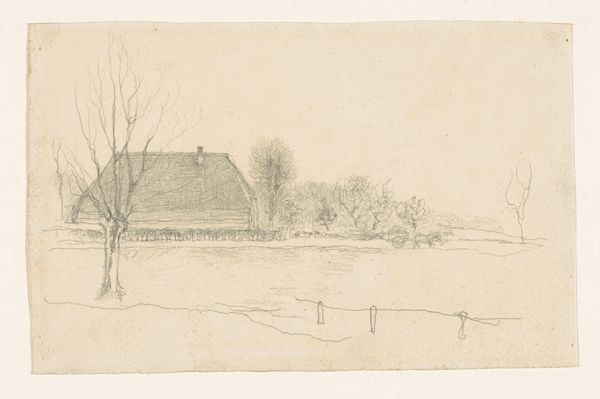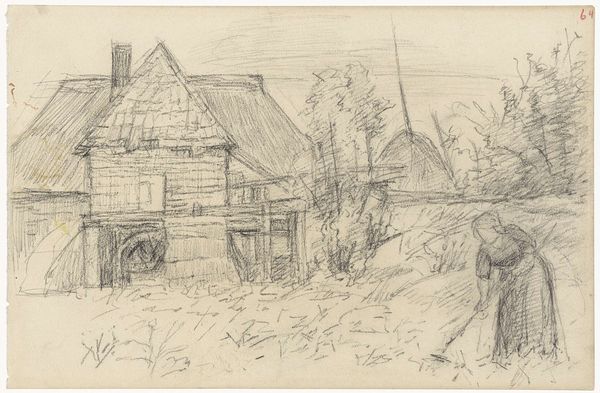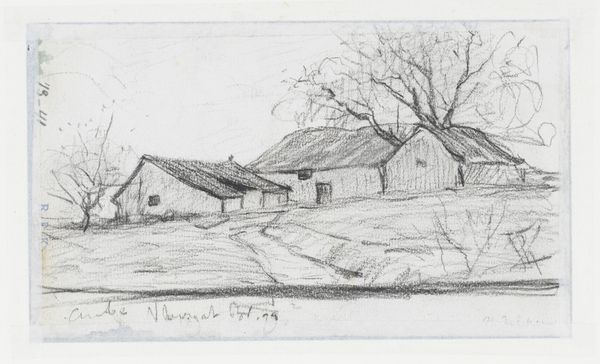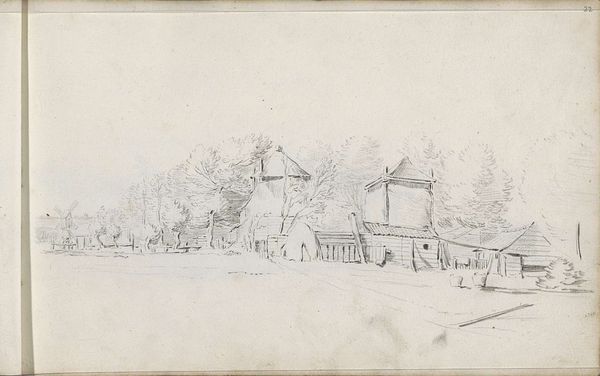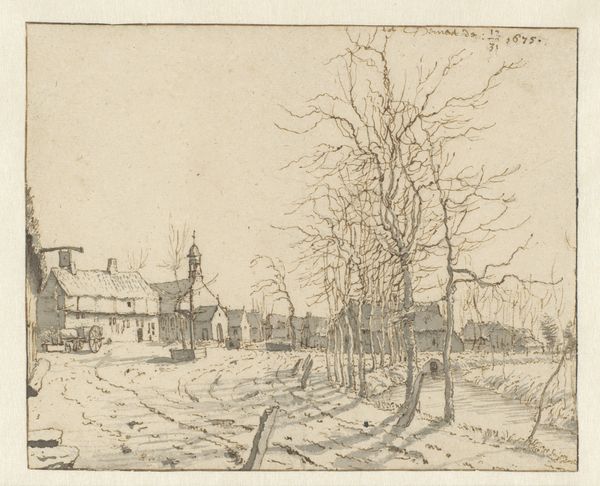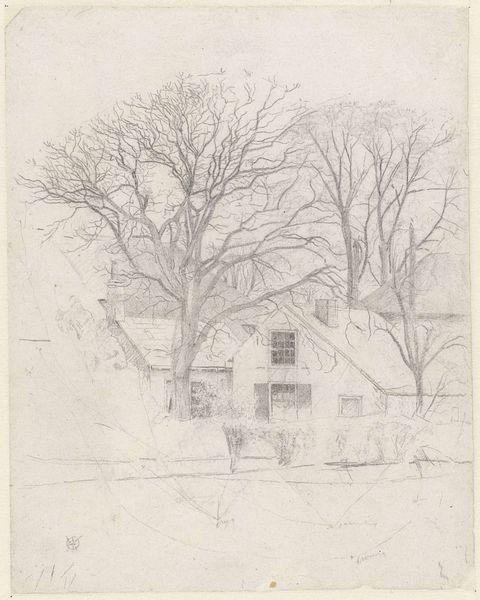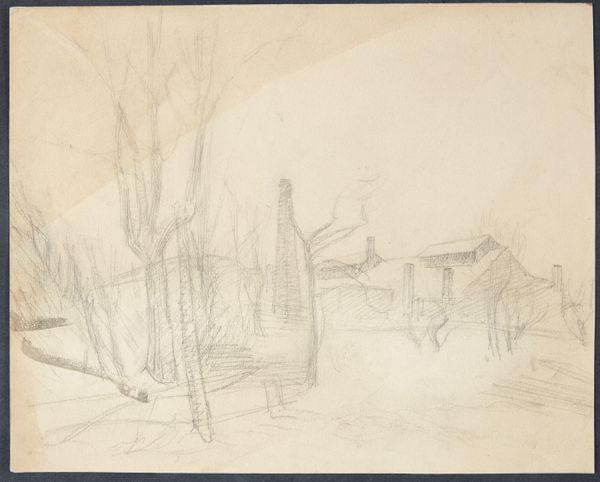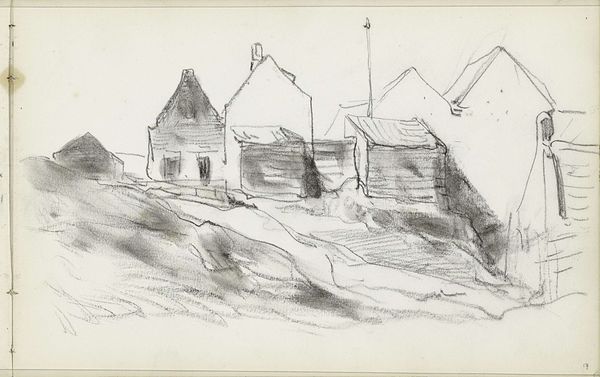
Dimensions: height 250 mm, width 320 mm
Copyright: Rijks Museum: Open Domain
Editor: Here we have "Besneeuwd dorpje," or "Snowy Village," a pencil drawing made sometime between 1874 and 1925. It’s currently housed in the Rijksmuseum. It feels quite preliminary, almost like a sketch from a personal sketchbook. What strikes you about it? Curator: Well, immediately I'm drawn to the starkness of the pencil on paper, highlighting the economics of art making. The artist, Jan Veth, has seemingly captured this scene with readily available materials. How does the drawing's medium—pencil—impact its value, versus, say, a painting of a similar scene? Is its accessibility part of its inherent worth? Editor: That's an interesting point. I hadn't considered the economics. I was just thinking about how the pencil lines contribute to the feeling of a quick impression, almost fleeting. Does that rapid capturing suggest something about the social context - the pace of change at the time, perhaps? Curator: Precisely. Think about industrialization and urbanization in the late 19th century. The demand for quicker, cheaper methods of artistic production was growing. Could this drawing be seen as a byproduct of a changing art market, valuing efficiency and immediacy over traditional, labor-intensive techniques? The visible "incomplete sketchy" nature invites reflection. It speaks to a shift in art consumption. Editor: I see. So, we're not just looking at a snowy village scene but also a potential reflection on the artist's relationship with the changing art world, through the deliberate use - or seeming lack of refinement - of his materials? Curator: Exactly. It forces us to examine not just what is depicted, but how and why it was made in this way, and who was this made *for*. It questions traditional hierarchies between a quick sketch and a "finished" artwork. Editor: This makes me think about the labor that *isn't* present - the missing layers of paint, the hours not spent on detail. That absence almost becomes a statement. I definitely have a new perspective. Thanks! Curator: And I appreciate you drawing my attention back to the artist’s own hand at work. It is a constant negotiation.
Comments
No comments
Be the first to comment and join the conversation on the ultimate creative platform.

